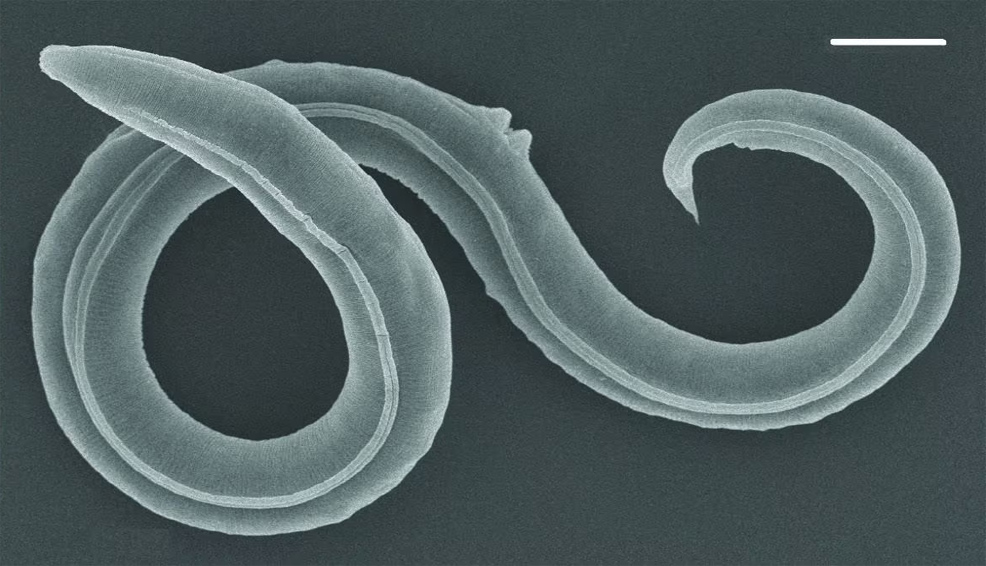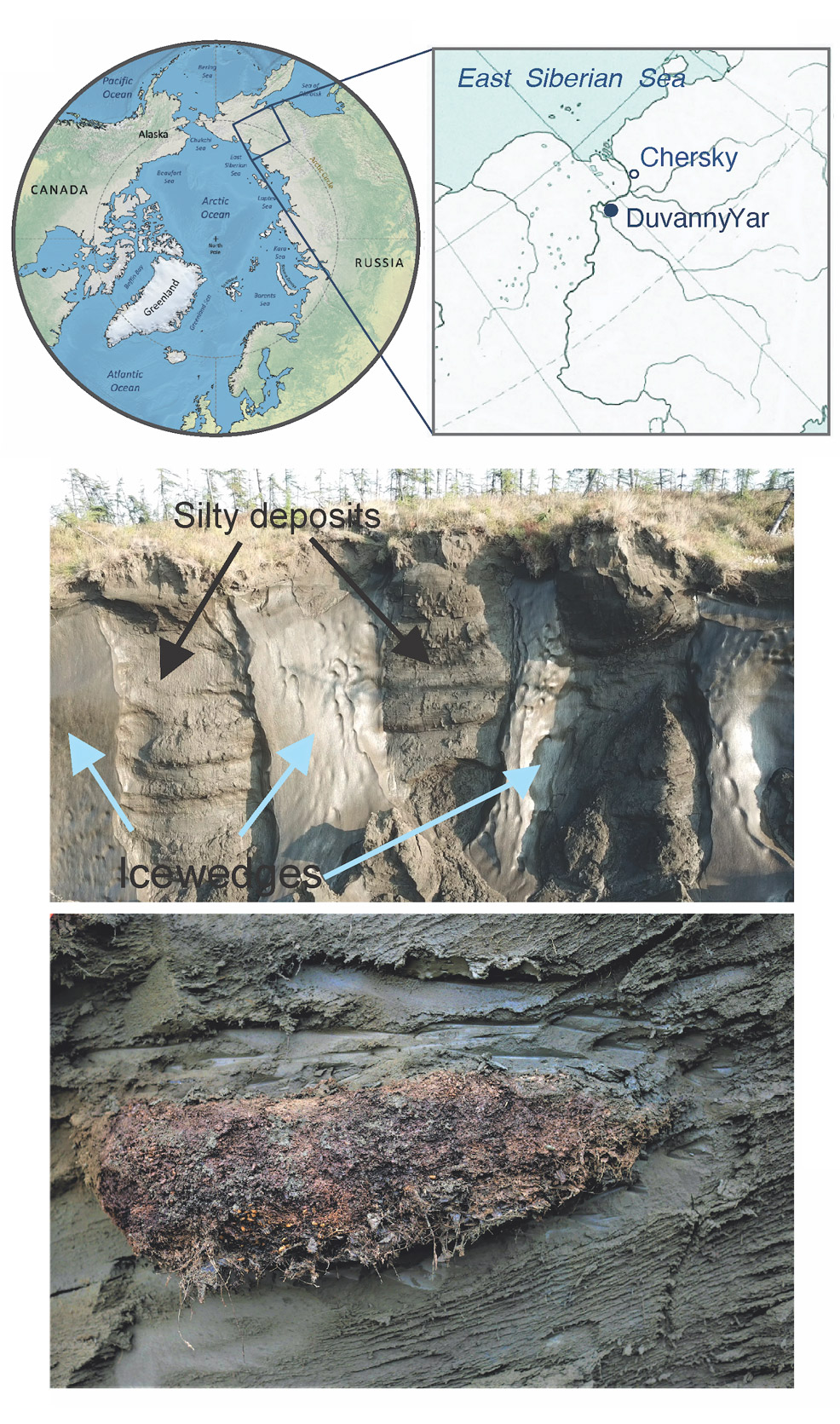
28th July 2023 Frozen worm revived after 46,000 years The longest known cryptobiosis in a nematode is reported, with an organism revived after 46,000 years in Siberian permafrost.
A soil nematode reanimated from Siberian permafrost had laid dormant for around 46,000 years, according to a study published yesterday in the open access journal PLOS Genetics. The authors include Anastasia Shatilovich, a soil researcher at the Russian Academy of Sciences in Moscow, Russia, and Vamshidhar Gade from the Max Planck Institute for Molecular Cell Biology and Genetics in Dresden, Germany. Some animals, such as tardigrades, rotifers, and nematodes, can survive harsh conditions by entering a dormant state known as "cryptobiosis". The team involved in this study looked at nematodes revived from a rodent burrow in silt deposits in the northeastern Arctic. Radiocarbon analysis of plant material from this burrow (pictured below) revealed that these deposits, 40 m (131 ft) below the surface, had remained frozen since the late Pleistocene, somewhere between 45,839 and 47,769 years ago.
Using genome sequencing, assembly, and phylogenetic analysis of the nematode's relationship to modern species, the researchers determined that it belongs to a previously undescribed species, which they are calling Panagrolaimus kolymaensis. They compared its genome with a model organism, Caenorhabditis elegans, and identified genes in common that are involved in cryptobiosis. When mildly desiccated (having water removed) in the laboratory, both species increased their production of a sugar called trehalose, which may help them to survive harsh desiccation and freezing. They then tested the survival capabilities of P. kolymaensis and found that exposure to mild desiccation before freezing helped prepare the worms for cryptobiosis and improved survival at -80°C. This treatment also benefitted C. elegans dauer larvae, which then survived 480 days at -80°C with no reductions in viability or reproduction after thawing. In 2018, Russian scientists revived two species of frozen nematodes from permafrost, one dated to about 41,700 years ago. This new study beats that timeframe by 4,300 years and is the longest cryptobiosis ever recorded in nematodes. By adapting to cope with extreme conditions, these creatures might have gained the potential to remain dormant over geological timescales. "Long timespans may be limited only by drastic changes to the environment, such as strong fluctuations in ambient temperature, natural radioactivity, or other abiotic factors," the study authors write. "Through comparative analysis, we find that P. kolymaensis and model organism C. elegans utilise similar adaptive mechanisms to survive harsh environmental conditions for prolonged periods. Our findings here are important for the understanding of evolutionary processes because generation times could be stretched from days to millennia, and long-term survival of individuals of species can lead to the refoundation of otherwise extinct lineages." A better understanding of long-term cryptobiosis could also help in developing new ways to store human cells and tissues over long periods of time.
Comments »
If you enjoyed this article, please consider sharing it:
|








